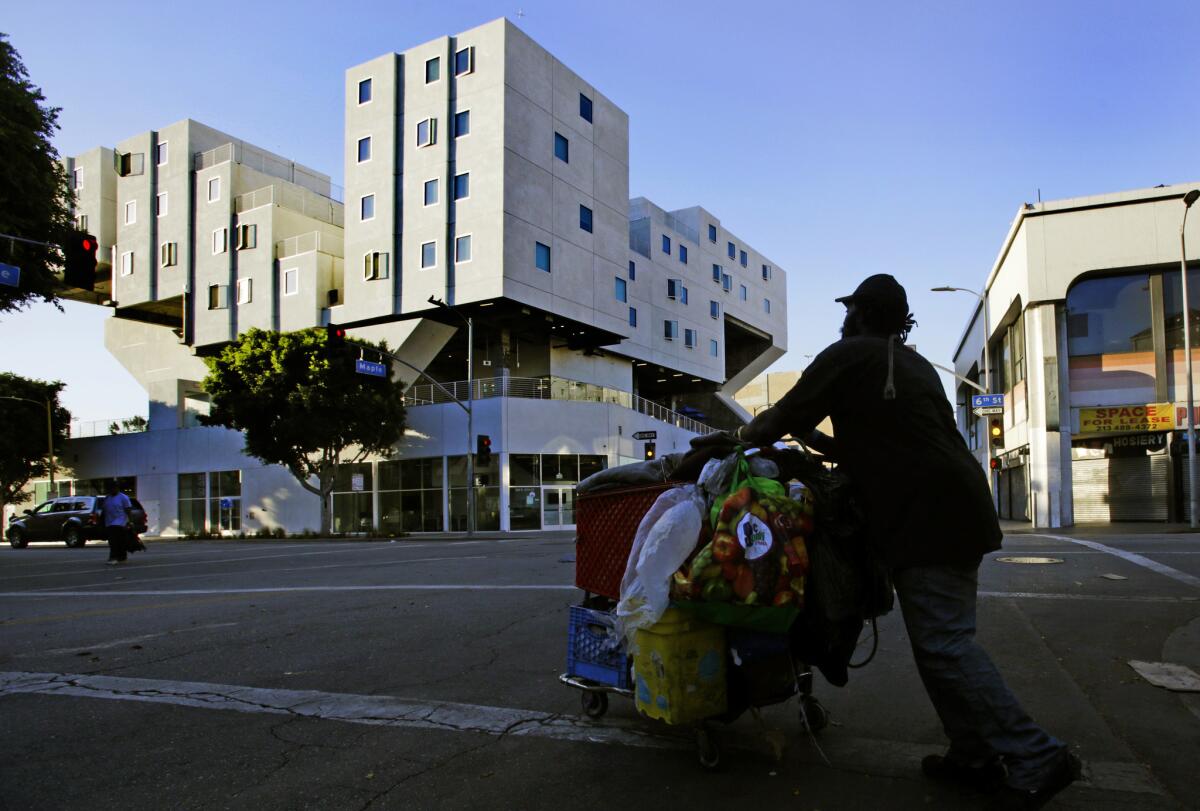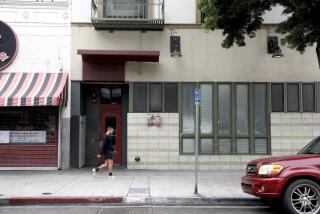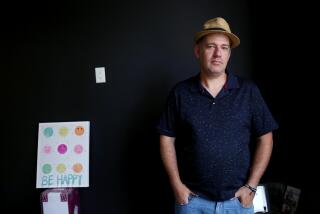Homeless advocate Andy Bales, battling dangerous infections, warns of skid row health crisis

A homeless man crosses the road on skid row with his belongings in a shoping cart.
- Share via
For more than a decade, the Rev. Andy Bales has advocated for the homeless on Los Angeles’ skid row, where they often are the victims of violence, patient dumping and illness.
Now, the survivor of a kidney transplant and quadruple bypass surgery is in a wheelchair much of the time, fighting a combination of E. coli, staph and strep that crept into his foot in 2014 and spread to his ankle. His struggle was first reported in L.A. Weekly.
“Many people here have compromised immune systems in these unsanitary conditions, and it can be deadly,” Bales said recently. “A person came into the clinic, and his foot was black, a stage beyond mine.
“These kind of infections are common on the row,” he continued. “If it convinces people to realize just how bad things have gotten on skid row, then I am going to tell my story.”
A unique strain of tuberculosis also has cropped up in skid row in the past few years.
“If you don’t care about the homeless down here, then care about the health calamities that could come from here,” Bales, 56, said.
He said he was pleased this week when city leaders declared a state of emergency on homelessness and vowed to devote up to $100 million to the problem.
“It’s twice as bad as when (former police) Chief (William) Bratton cleaned up skid row a decade ago,” he said.
As to his own plight, he speaks bluntly.
“The doctors want to baby it,” he said. “But I’d rather amputate it and get some equipment that allows me to use my hand cycle.” Bales uses a bicycle driven by arms for exercise.
Bales, who has diabetes, got a blister after finishing a triathlon in 2013 and was wearing a special boot to protect it.
He said he may have made contact with the bacteria that caused the infection in September 2014 on one of his regular walks, during which he distributes water to homeless people who line the streets with tents and shopping carts.
A few days later, his foot began to hurt as he headed to the airport for a conference in North Carolina, and a blister became a wound. By the time he arrived in Raleigh, N.C., the wound had turned into a massive blood infection in both legs, and his foot looked like “the walking dead,” he said.
NEWSLETTER: Get the day’s top headlines from Times Editor Davan Maharaj >>
A four-day hospital stay and six weeks on IVs kept him alive, along with a lot of prayer, Bales said.
He can walk a few steps with a special boot, he said, but he mostly uses a wheelchair and a car with hand controls to get around. He also swims, although the water causes his ankle and foot to swell.
His problems, he said, are minor compared to the people he works with each day. The homeless population in the city of Los Angeles is about 26,000, and the number has increased about 12% in the past two years, according to L.A. County figures.
“People experiencing homelessness often have problems with their feet,” he said. “Many are in walkers and wheelchairs and live in horrific conditions on skid row.
“We need emergency triage stations for homeless all over the city,” he continued. “We need to be to able to offer a bed to everyone.”
ALSO
California mandates rear-facing car seats for kids till they’re 2
As autumn arrives, temperatures climb, not fall, in Southern California
Costco shopper punched in fight over samples: ‘He hit me, and the blood started’
More to Read
Sign up for Essential California
The most important California stories and recommendations in your inbox every morning.
You may occasionally receive promotional content from the Los Angeles Times.











